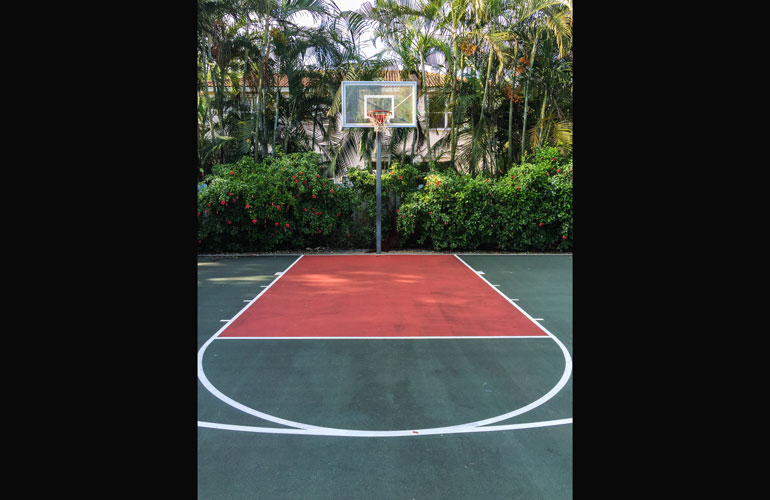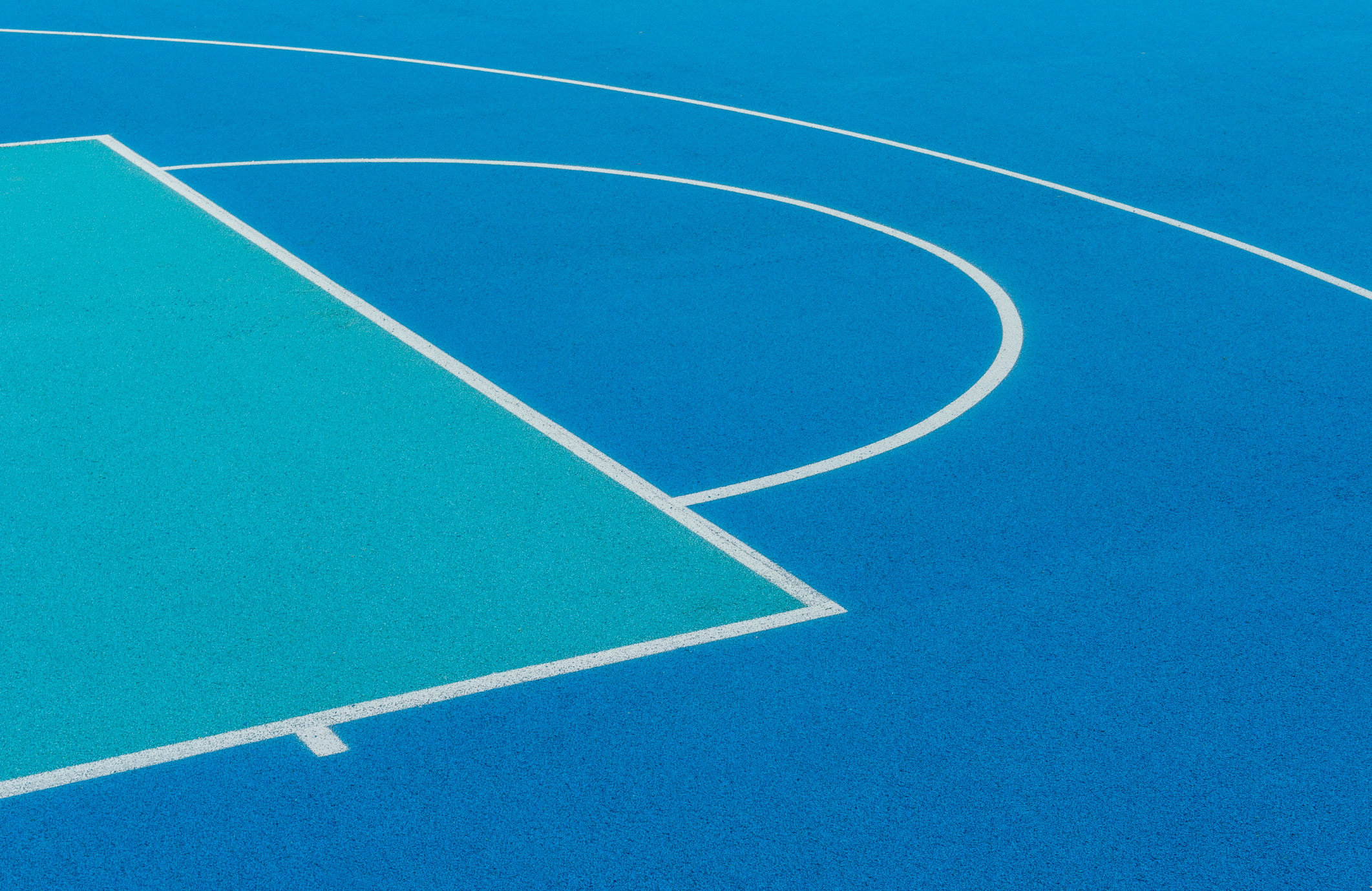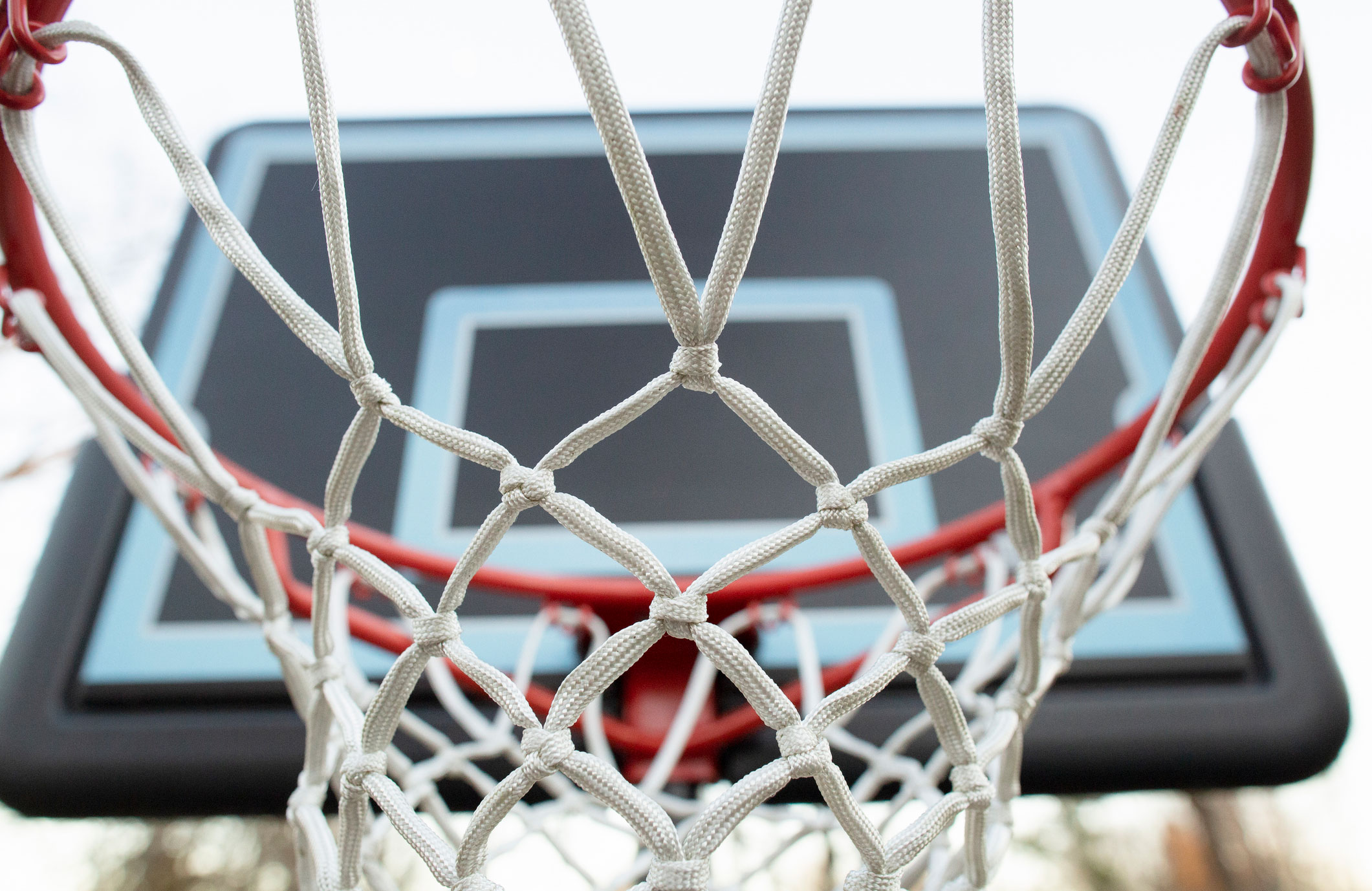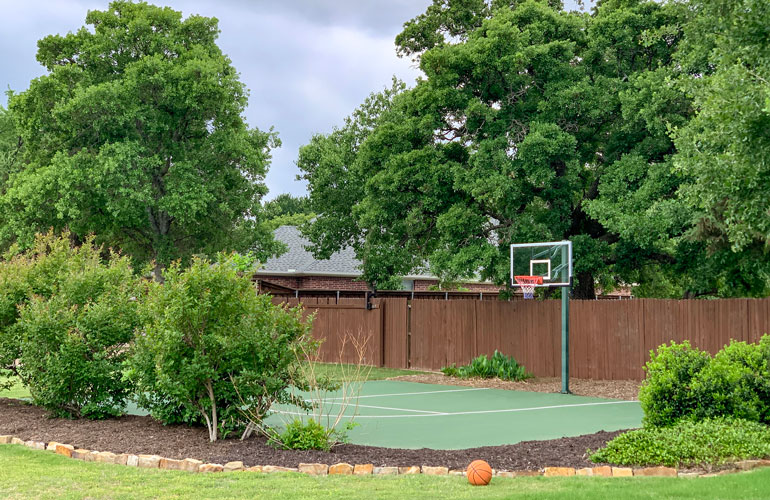Backyard basketball
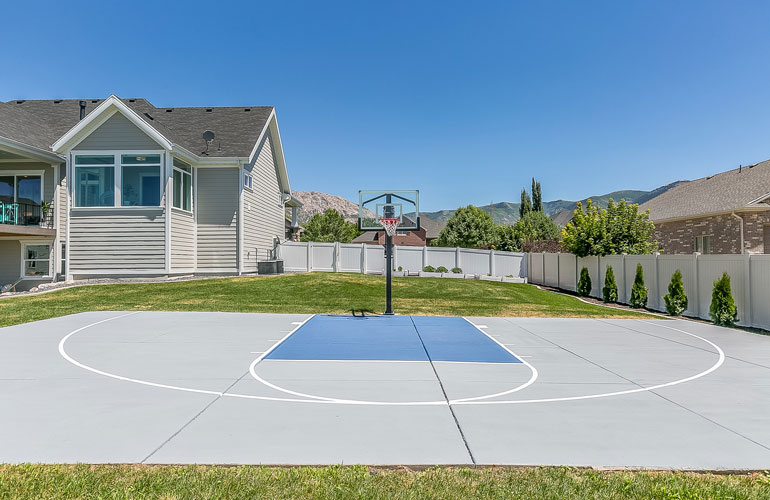
A garage hoop is great. And certainly, if you live near a park, you can play full- or half-court games with actual court lines. But what if you could build your own? How cool would that be?
You can! It’s a big project, but doable with helpers and planning. We’ll walk you through the basics to give you an idea of what you’re getting into.
Planning your backyard basketball court
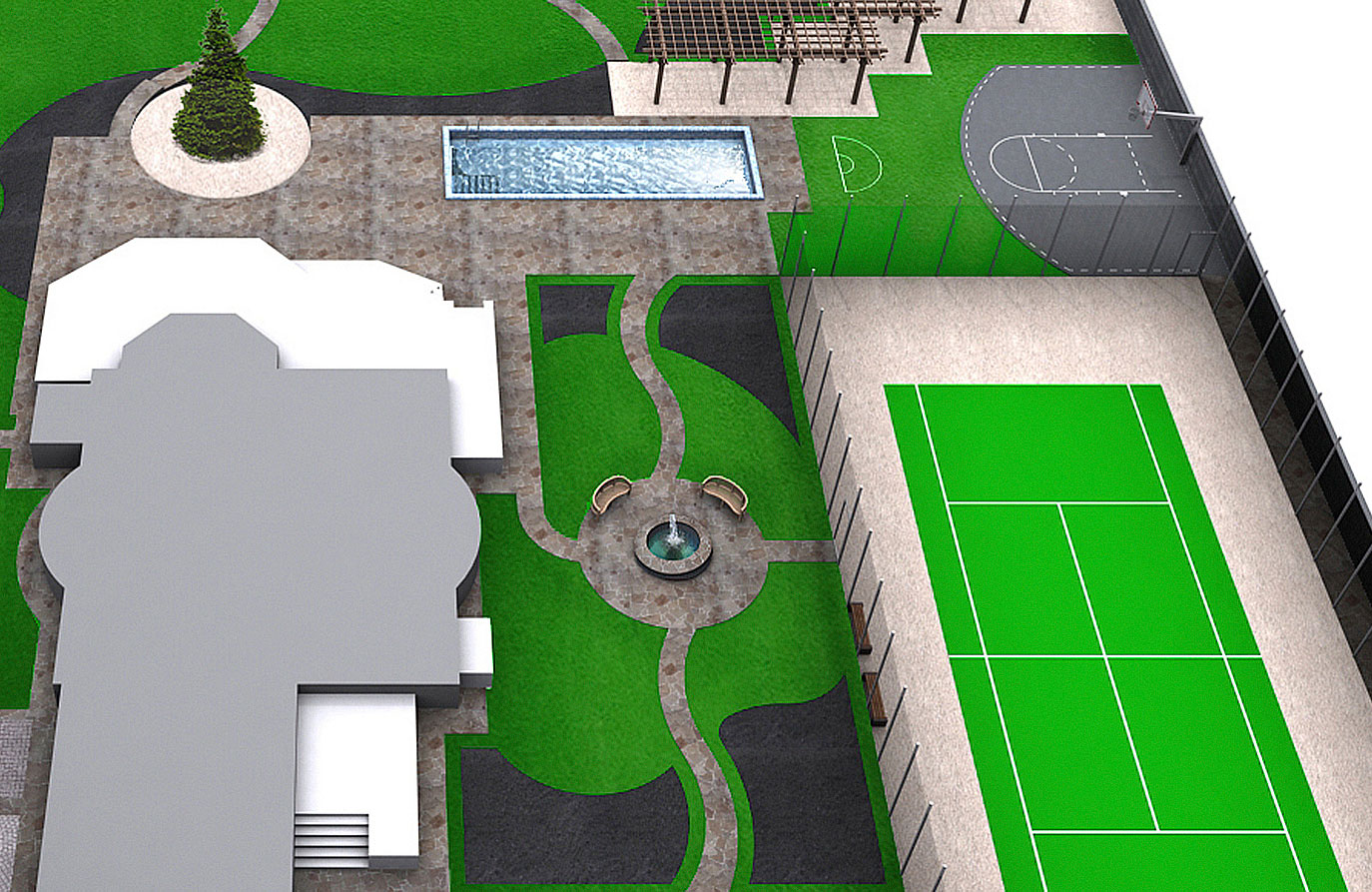
With a project this size, it’s critical to begin with a well-thought-out plan. Before you pick up a shovel or concrete form, map out your ideas with software like SketchUp, and investigate how much this whole thing is going to cost.
Here’s where to start:
Choose the size
Decide how much space you can dedicate to your court. Compared to football or baseball, basketball requires a smaller playing surface, but you’ll need to give up part of your yard.
According to the International Basketball Federation (FIBA), a full size court is exactly 28 by 15 metres, while in the National Basketball Association (NBA), the court is 28.7 by 15.2 metres. If you can do that, wow! Congrats!
If that’s too big, cut it down to a half-court or even smaller. The FIBA 3×3 regulation sized half court is 15m x 11m. If a half-court won’t fit in your yard, scale it down to whatever dimensions you can accommodate. In Australia, ‘half-court’ sizes range from about 7 metres in height (to fit the ‘free-throw line’, or 9m (to fit the ‘three-point line’) and 4-5 metres in width and upwards. Some popular sizes include 10m x 7m or 9m x 5m. Don’t forget to allow for room to run out of bounds.
Choose the playing surface
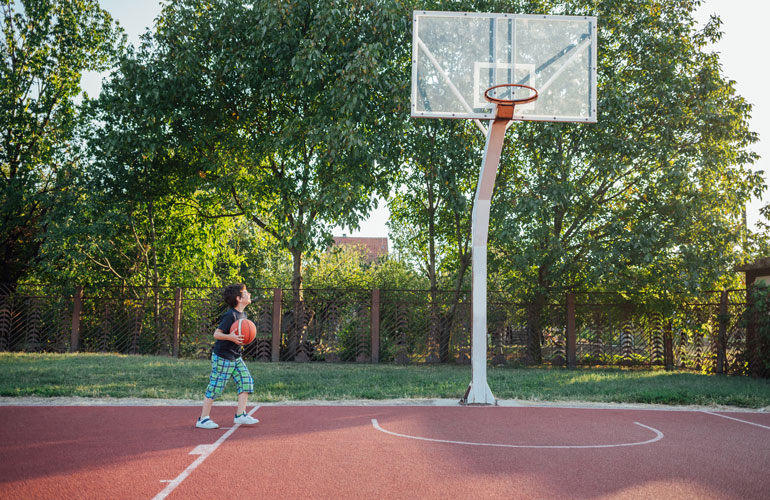
Backyard basketball courts usually start with a concrete slab, which you can play on or cover with other materials. Here are some popular options:
Modular tiles: Interlocking polymer tiles sit on top of the slab. They’re easy to snap together and provide great drainage.
Acrylic: Durable acrylic coatings can be applied to the slab with or without cushioning systems underneath the custom-colour playing surface.
Asphalt: Most of us have played on an asphalt court; it’s a common choice for schools and parks. It’s softer than concrete and relatively inexpensive compared to other options. But it doesn’t last as long.
Get a permit
Any time you’re planning construction on your property, particularly a project as large as a basketball court, call council and check their website to see if you need a permit.
Draw up your plans before you apply. Verify any easements to your property boundary. And if you plan to take down trees, make sure that’s covered in your permit application as well.


